Samuel Villarreal kicked off his career with two sizable releases. DSV was a megaWAD that could be played back in each of the then-popular source ports. A sizable portion of its levels were based on Doom 64 maps, ever near and dear to Kaiser's heart. Blackness was released at the exact same time in 2000 and appears to have been intended for a bigger run. This second installment of the DSV series, however, only came out to a five-level hub with a final boss map. The author described it as "abandoned" and a parody of Hexen. I can agree with the first statement but I doubt whether it was initially intended to satirize or poke fun at Hexen. If so, then it would be amusing considering how much of Hexen is woven into Doom 64's DNA. This set was explicitly designed for ZDoom; owing to its relatively early place in the port's history, it is not compatible with later versions of (G)ZDoom. Jumping is absolutely required.
Kaiser begs off any sort of in-depth plot. In DSV, you fought off an invasion by the titular antagonist, taking a portal to its mysterious, medieval homeworld. It turns out that it was just a servant of a greater power named Stealfka (Villarreal's pre-Kaiser handle). You think that this is also Stealfka's homeworld, but Kaiser's .TXT for BLKNS implies that you are actually in the past. Whatever the case, you enter a castle and find a bunch of monsters in stasis, including Stealfka. Once you explore the keep a bunch of thugs appear, after which most of the monsters are released from their prisons, with Stealfka nowhere to be found. It's almost played like you trespassing in the magical menagerie inadvertently allows DSV's remnants to break its master free.
So. Blackness was developed for, say, ZDoom v1.22 or v1.23b. I've talked about this with Virgil the DOOM Poet's Lost Seraphim but some of ZDoom's core behaviors have changed since 1999-2000 with no concern for deprecating older WADs. This set suffers from at least one game-breaking bug when played back in "modern" ZDoom. The major issue crops up in "The Temple" (MAP04) where the player is blocked by lines that would normally be passable, dead-ending progression. I think that the setup may have been related to the nearby over/under bridges but do not care enough to sleuth out the particulars of the behavior. If you're playing on a more recent version of Windows then you'll need to run ZDoom v1.22 in a compatibility mode. There is another, more glaring issue that appears to be unrelated to playing it back in an older version of ZDoom, namely that Kaiser apparently forgot to code the MAPINFO to treat the minisode as a hub! This is easily enough fixed in something like SLADE by adding the word "hub" after "clusterdef1" in the MAPINFO lump. It could be that there is an even older version of ZDoom that Villarreal built this for that simply understood all clusters as hubs, but the manual correction easily solves the issue.
With housekeeping out of the way, there is some superficial overlap between Blackness, DSV, and contemporary megaWADs Herian and Herian 2. Kaiser uses two primary sources of inspiration for BLKNS. Hexen is the origin of the look of the hub, clearly a knock-off of "The Seven Portals" (MAP02). This informs the aesthetic of the rest of the set, which (like the Herian series) uses a combination of Hexen's and Heretic's resources not only as wall-papering but also to replace all of the weapons and most of the monsters. To be clear, none of the beasties or armaments were subject to mechanical changes, unless you count ZDoom's lovely stealth flag. Both Ian Wilson and Kaiser used commercial levels as a blueprint for some of their maps. Ian was more freewheeling in the games that he drew from but Hexen numbered among them. Here, Villarreal continues his Doom 64 love letters with three more - "Breakdown" (MAP20), "Unholy Temple" (MAP23), and "Dark Entries" (MAP15).
For those who are interested, we are still a long way from the careful renderings that the author would later undertake in the Absolution TC. Never mind that the player both enters and exits each level through several different avenues while progressing through the hub, further breaking up any semblance to the originals. Villarreal's level design consists of very rough approximations of the originals with large design deviations. Some are thematic echoes, like the revenant spitfire shooters in "Dark Entries" (MAP05). Others are more geometric in nature, like the "Entryway"-style triangular platform rise in the same level where the original had a regular staircase and a tiered, triangular roof. The layouts are still quite recognizable when looking at Doom 64's and the derivations side-by-side.
The hub execution is similar to Hexen but much simpler. There are five portals - not six - and the author does a fairly decent job of dumping you near your next objective, particularly when it comes to non-door points like the red skull key and fire mask. The most confusing leg of the journey begins on your return to "Dark Entries" and after jumping up into the reservoir-like room at the top of the triangular runway. The trip leads you to a demon-infested underwater morass, an unmarked maze with a subtle exit to a previously-sealed portion of "The Temple" (MAP04). It isn't immediately apparent what the switch in the adjacent room does but you can figure it out by the process of elimination, provided that you have a decent memory.
My least favorite bit here is the keycode sequence in "The Temple", itself an homage to the barcode puzzle in the original "Unholy Temple". As far as I can tell, there is no hint in the set as to what the correct pattern is, made even worse by it being a four-number passcode with ten possibilities for each digit. The good news is that the correct code is insultingly simple for such a complex setup; each "digit" is the exact same. Unfortunately, you would catch Hell trying to figure this out on your own as - until the puzzle is solved and you snag the fire mask - an endless parade of lost souls beams into the room with you. Also, you can't leave until you've solved the puzzle, and Kaiser didn't script in some kind of message to let you know when you got the correct sequence. The door just... silently opens as long as the code is in place.
The other thing that bemuses me is Kaiser's multi-switch unlocks. Temple of the Lizard Men III had this same issue: small rooms where you have three, sometimes four switches to press before "sequence complete" and a door opens. Is this sort of thing in deference to the multi-switch triggers in Quake? It's not a compelling feature, especially when there isn't anything interesting to deal with outside of the very first one in "Awakening" (MAP01) with the fireball obstacle course. Even more tiresome is a staircase in "Dark Entries" that has to be built, step by step, with the push of the same gargoyle switch. Hooray.
If you're not into dungeon crawlers, then good news! Blackness's combat is considerably more interesting than Hexen's insofar as everything behaves like a Doom II monster or weapon. The start is kind of hairy as you have to do a ton of work with the pistol equivalent, all the way up through your first trip to "Breakdown" (MAP03). Stuff gets considerably nicer at that point as you can get the chaingun right before you enter MAP03 and snag the chainsaw-like on your way out. The super shotgun equivalent is easy to miss in "The Temple" as it's overshadowed by a regular armor on the same square. Combat is also simpler for a Doom II adventure as many of the more complex monsters are Sir Not Appearing In This WAD, those being the mancubus, arachnotron, pain elemental, and arch-vile.
I did get at least two relatively complex fight setups out of the whole deal. The western chamber of "Dark Entries" has a lot going on for it between the chain mesh fences, roaming lost souls, Baron on the ground floor, and tiered steps sporting chaingunners and revenants. Honorable mention to "The Tomb" (MAP06) with its network of commando-staffed boxes and imps ripe for BFG slaughter. The rest of the combat tends toward monotypical packs of monsters, which I guess was also fairly standard for Hexen as a whole. I did like the waterfall cave full of imps in "Valley of Wastelands" (MAP02), playing to the layout's strengths. I could have done without the underwater, demon-ridden labyrinth in the teleporter annex of "Breakdown", however.
I don't have a great idea yet as to how Kaiser's style morphed from DSV to the elegant level design seen in, say, Doom 64: The Lost Levels. It's interesting to think that, fourteen years later, he would go on to publish a highly-polished proper Hexen hub - Shadows of Chronos. I would hazard that his architecture is an improvement over DSV, at least when he's borrowing from Doom 64's ideas. There is nothing impressive in "Awakening" beyond the author showing off some ZDoom features like, well, polyobjects! Apparently the swinging doors are kind of buggy but I only got stuck in one once during my playthrough, and that was after having finished the set. Kaiser also uses scripting to breathe some life into Doom's typically static geometry, whether it's collapsing floors and platforms or a "Main Engineering"-style machine that transfers the red key to a different map.
Blackness is historically notable as an extension of Kaiser's run on transposing Doom 64 levels to Doom II and the Hexen aesthetic switches things up a bit. If you are at all a fan of the Heretic / Hexen / Doom mashup style then you may well want to give this hub a shot. The average player will probably get bogged down in its admittedly less confusing switch-fu and probably give up in a frothing rage at the lock-in keycode puzzle.

BLACKNESS
DSV2
by Samuel "Kaiser" Villarreal
| Awakening | MAP01 |
|---|---|
| First Trip: A plain scene-setter that sends you through a nondescript fortress after you awake from stasis. It's kind of (but not really) like a dark fantasy take of the start of Eternal Doom. The halls are eerily quiet, with you also running into a few monsters that are as frozen as you were. Eventually you hit the main trigger, activating the evil, and start to get a feel for what critters are reskins of which Doom II monsters. The polyobject doors are wicked cool and add a bit of "wow" factor. Second Trip: Whoa, coming back here is a surprise! This is a gratuitous step through a small, stained glass chapel-like box. | 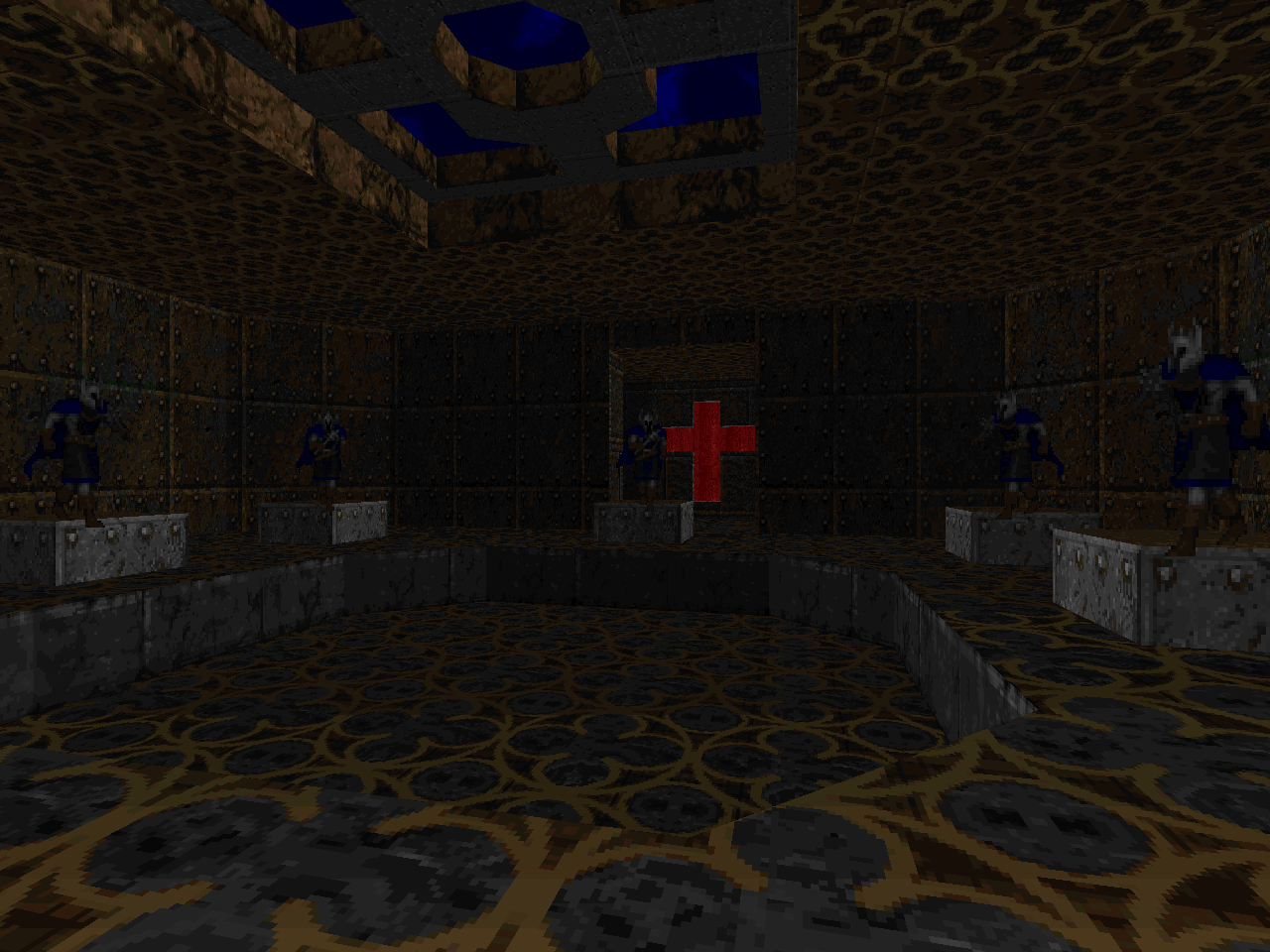 |
HELLO BLACKNESS MY OLD FRIEND
I'VE COME BACK TO THE HUB AGAIN
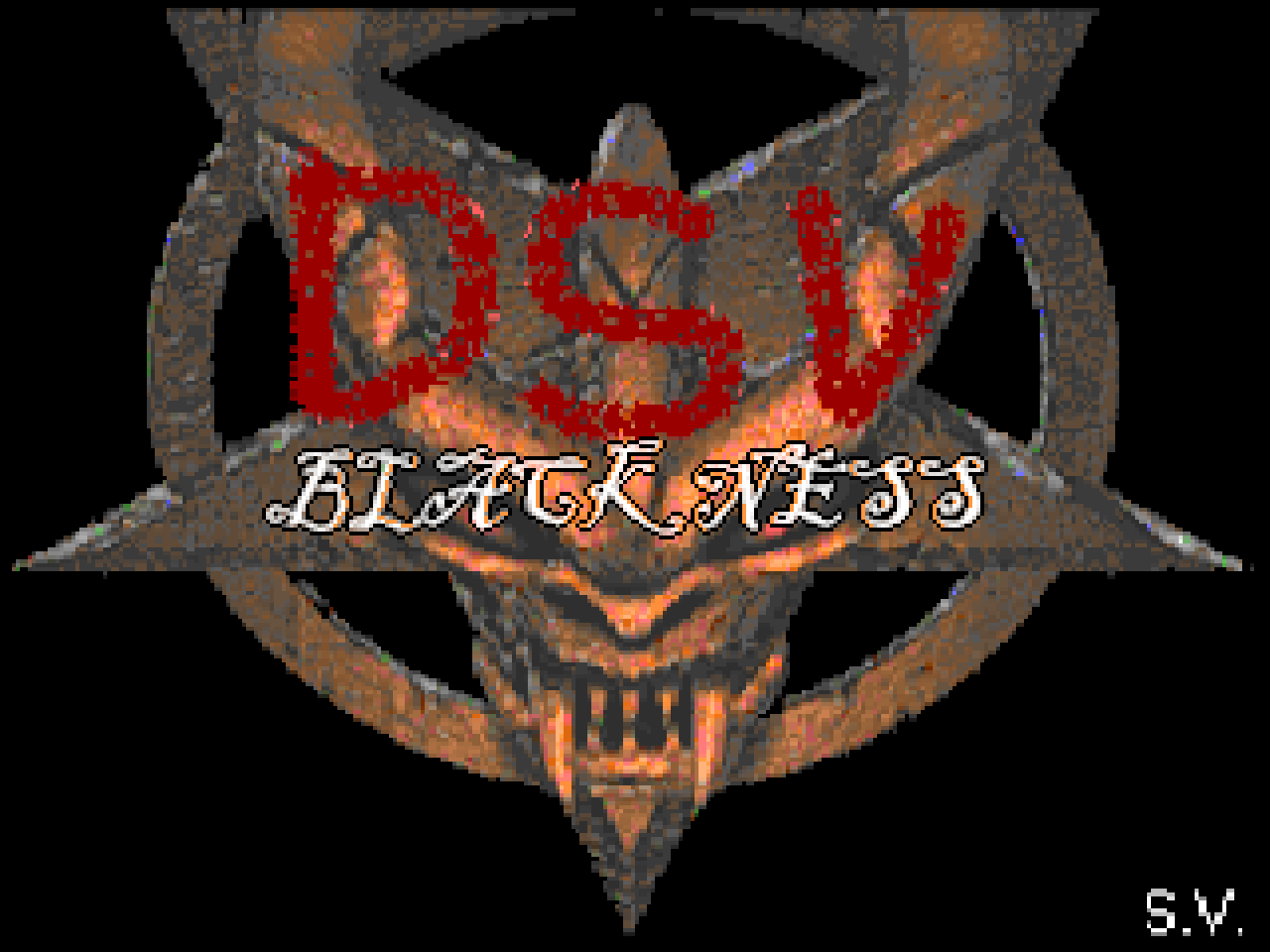
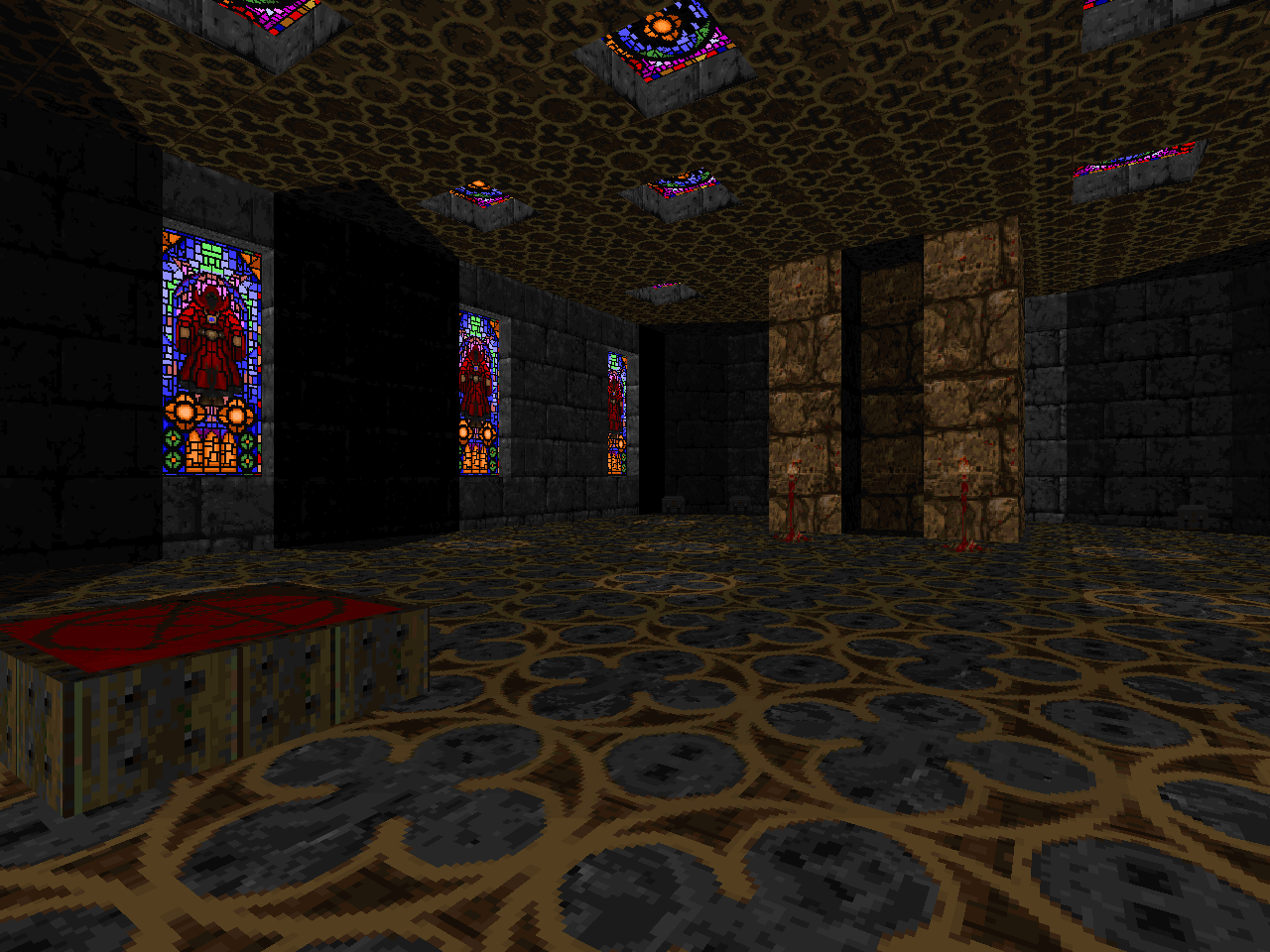
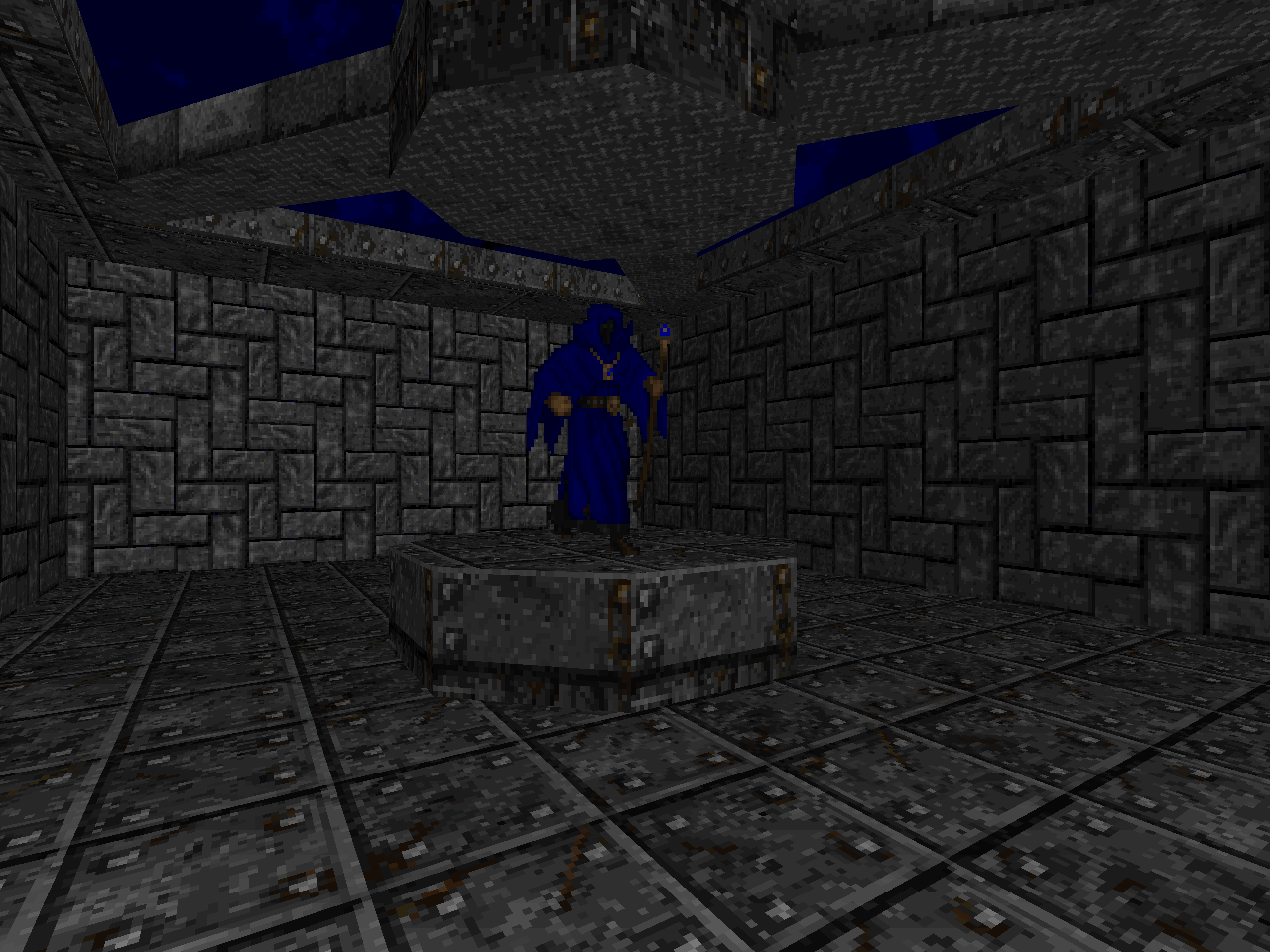
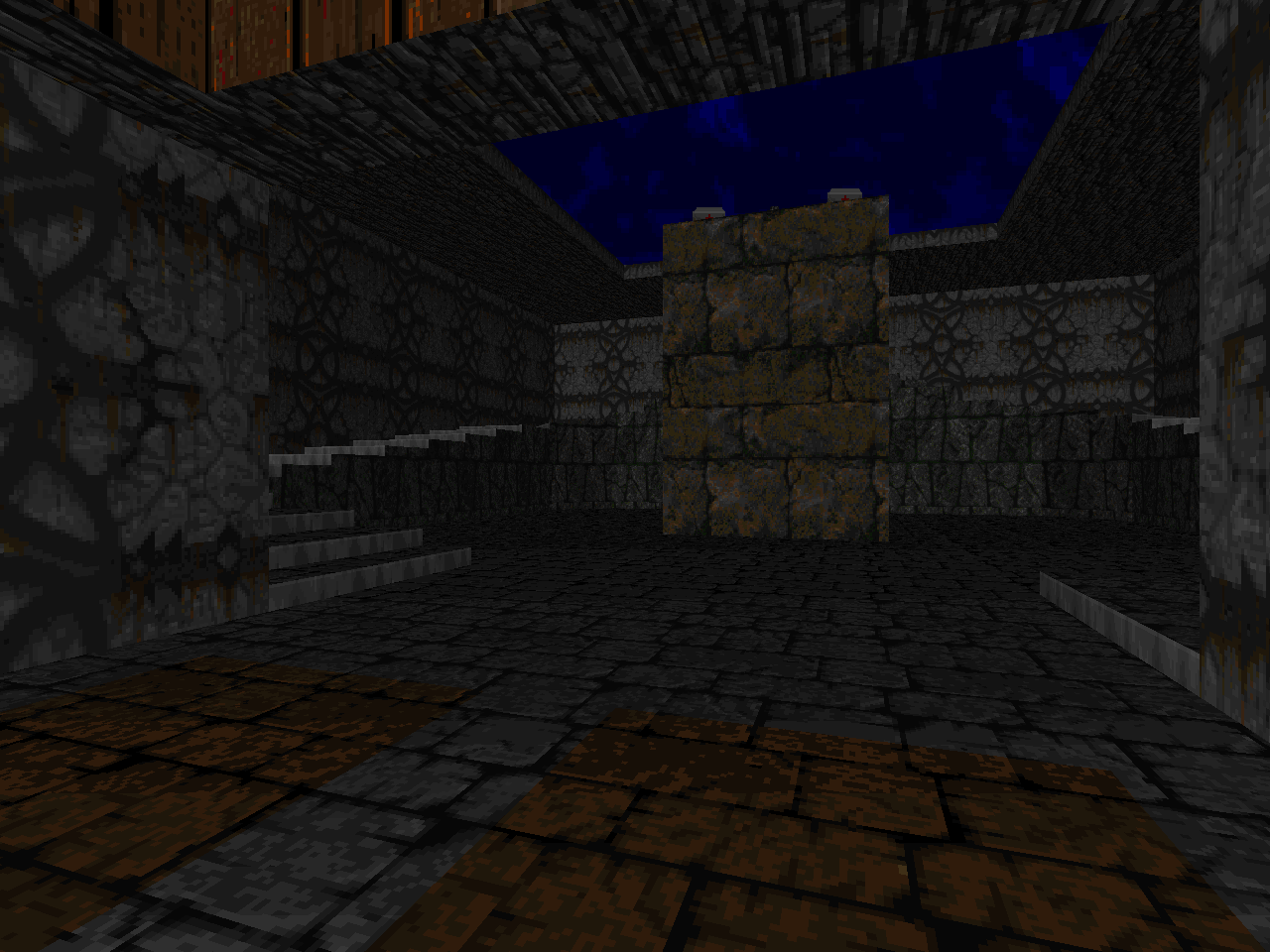
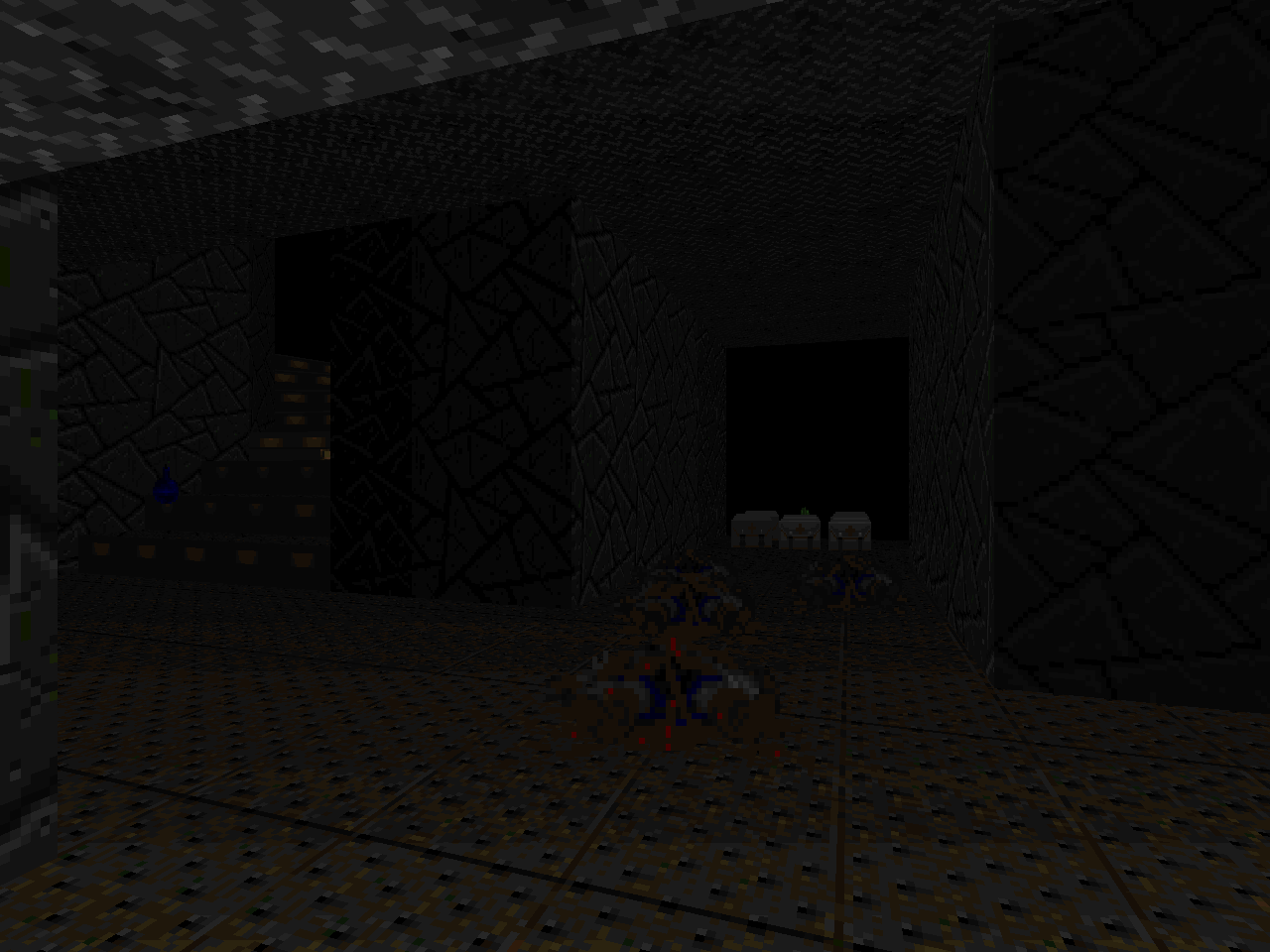

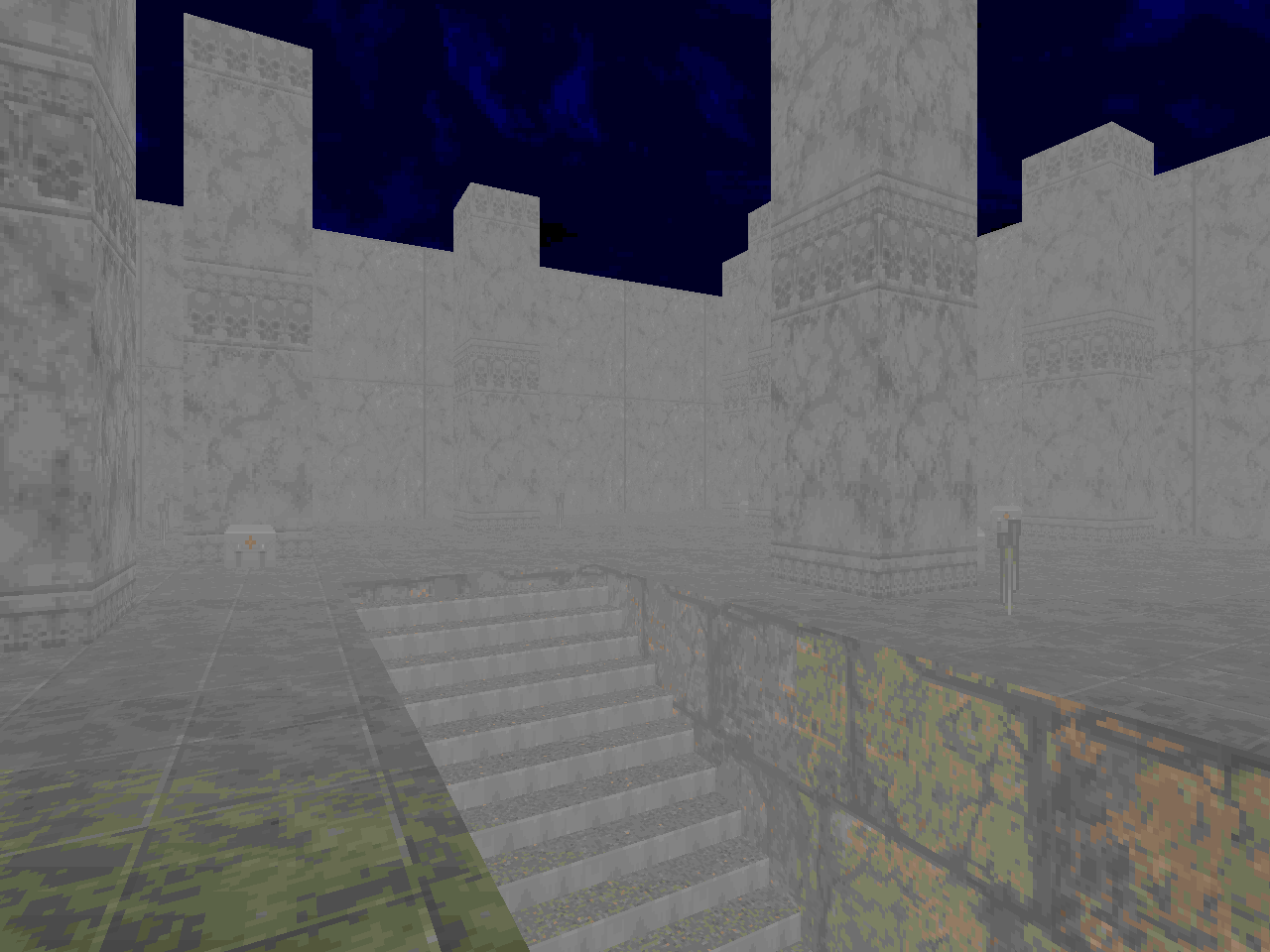
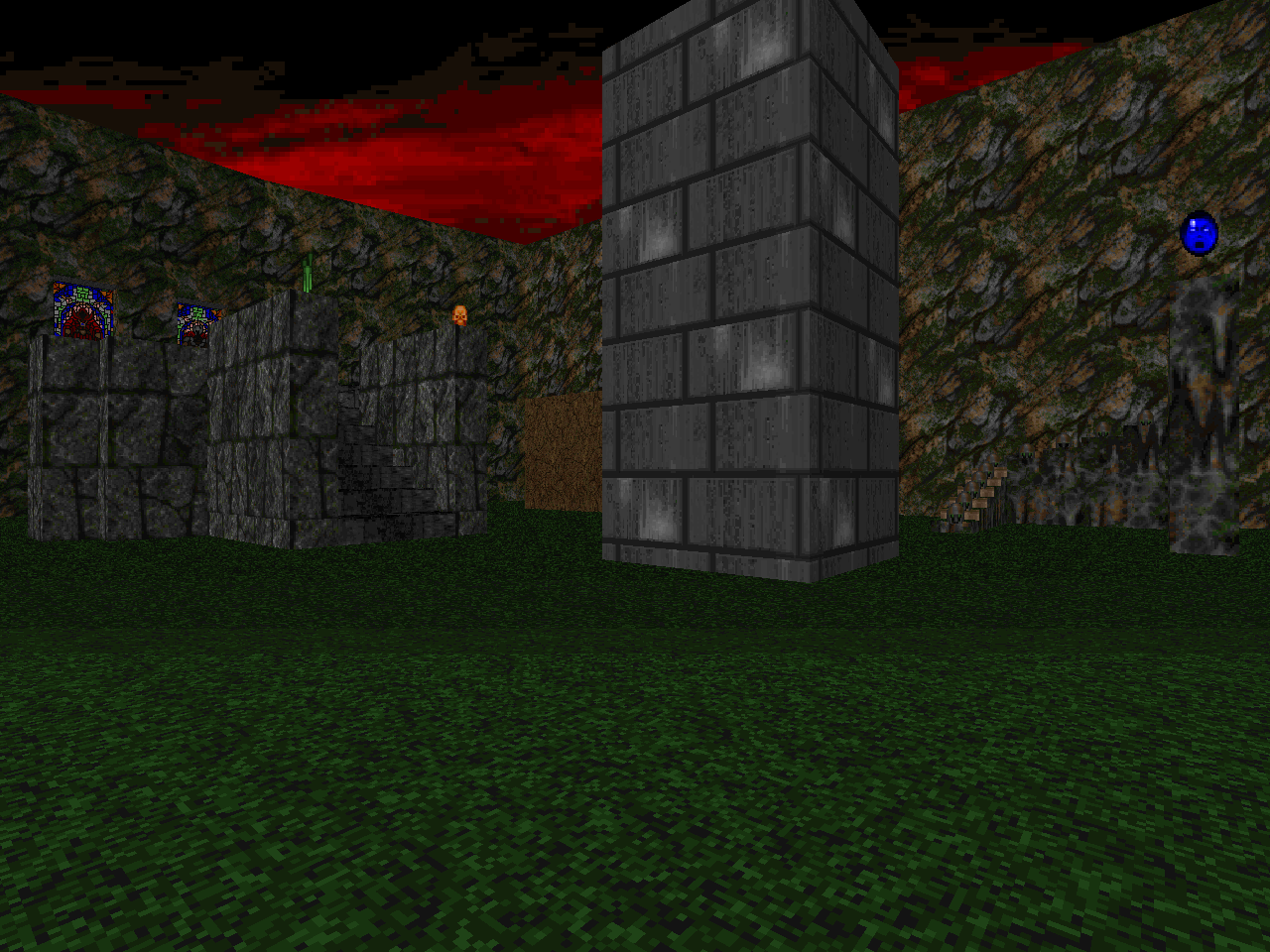
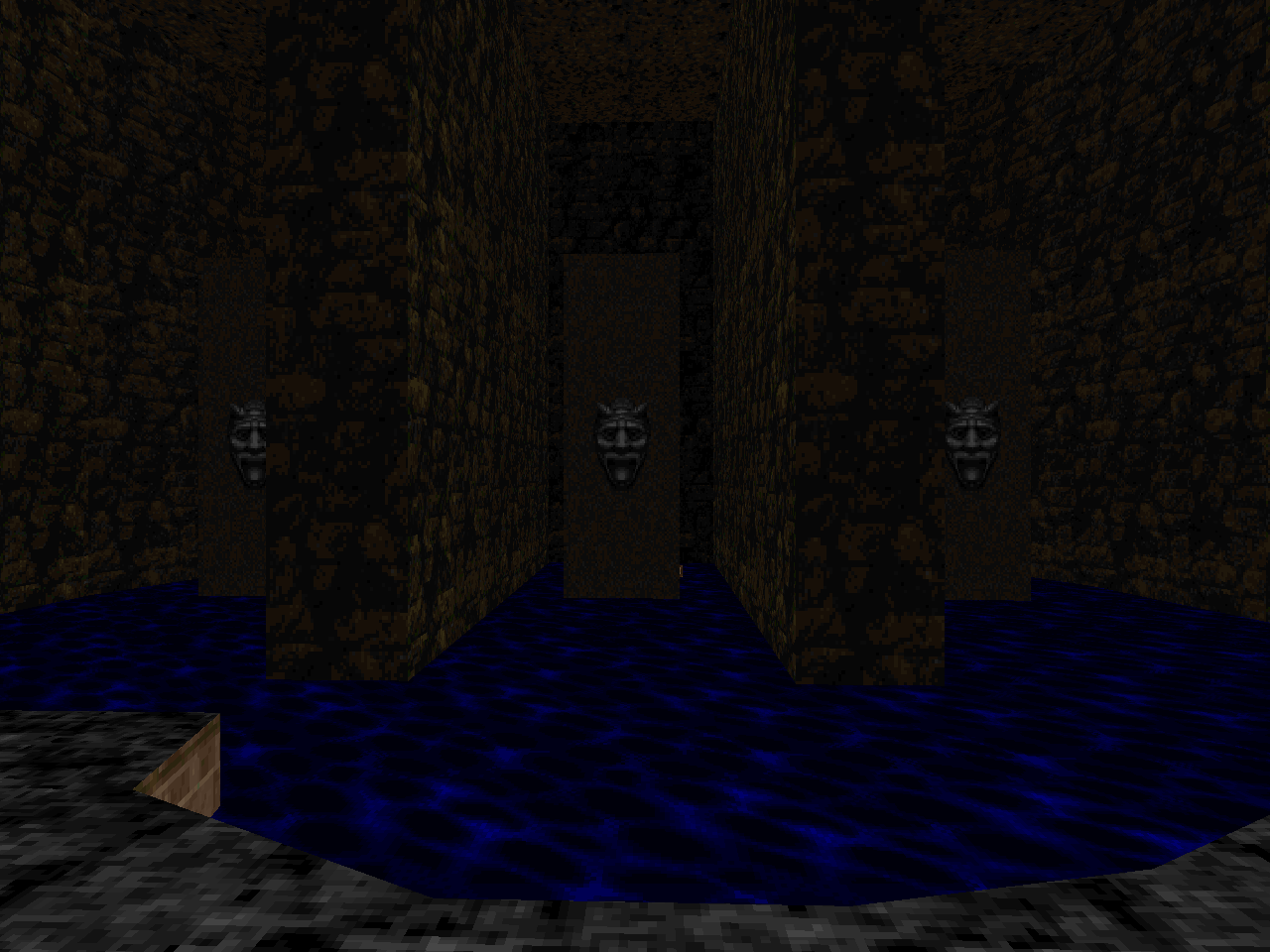
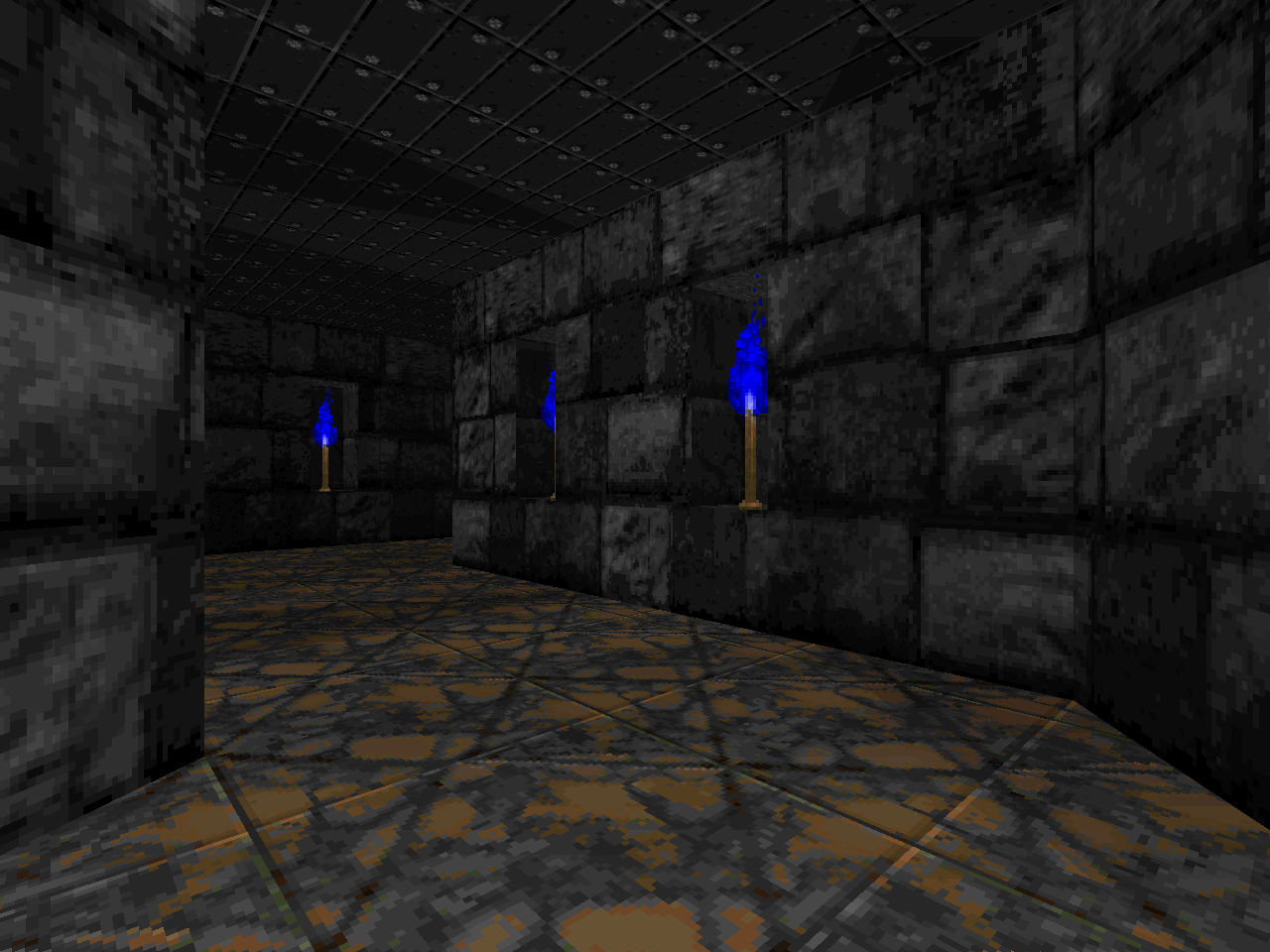
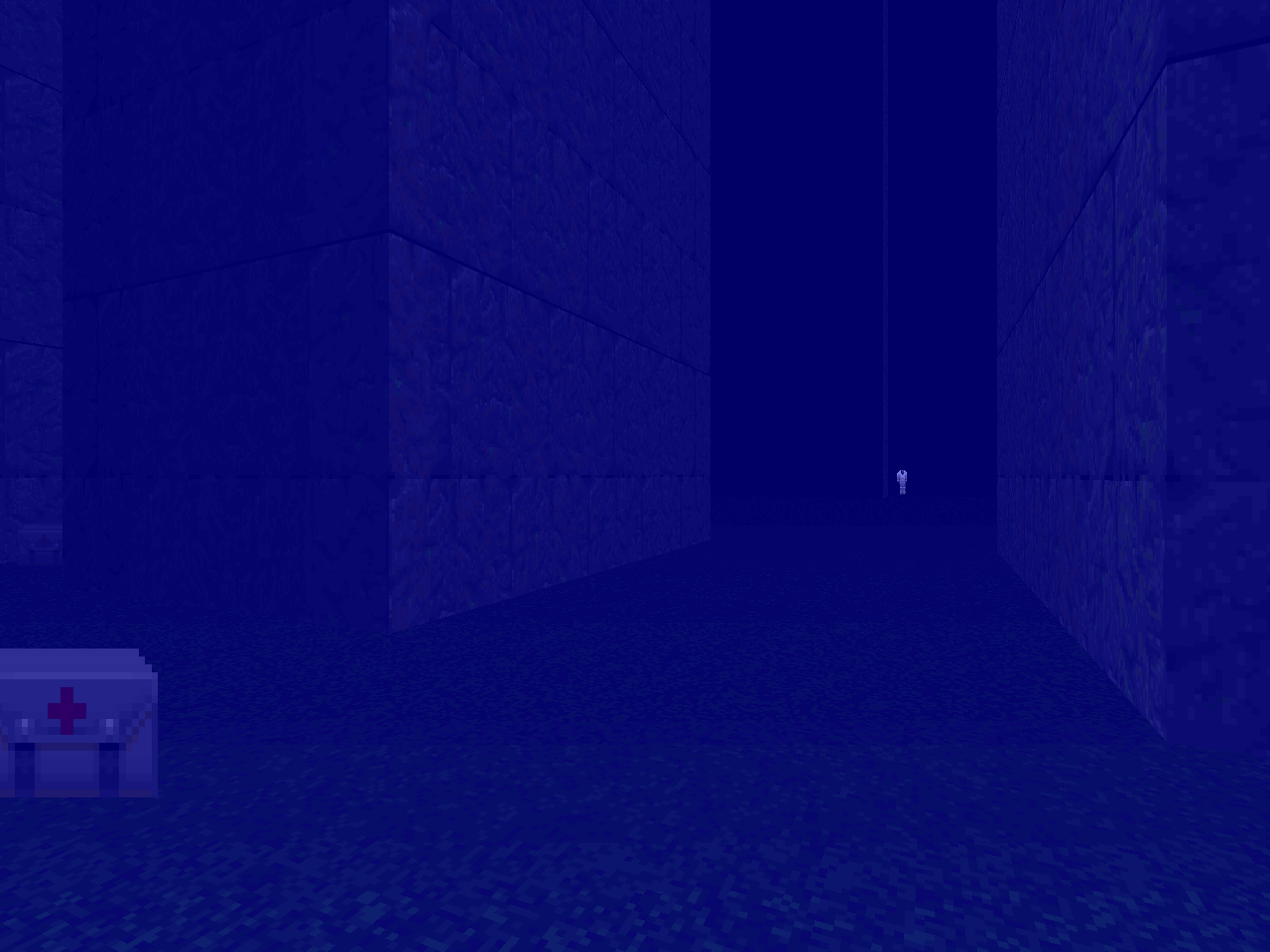

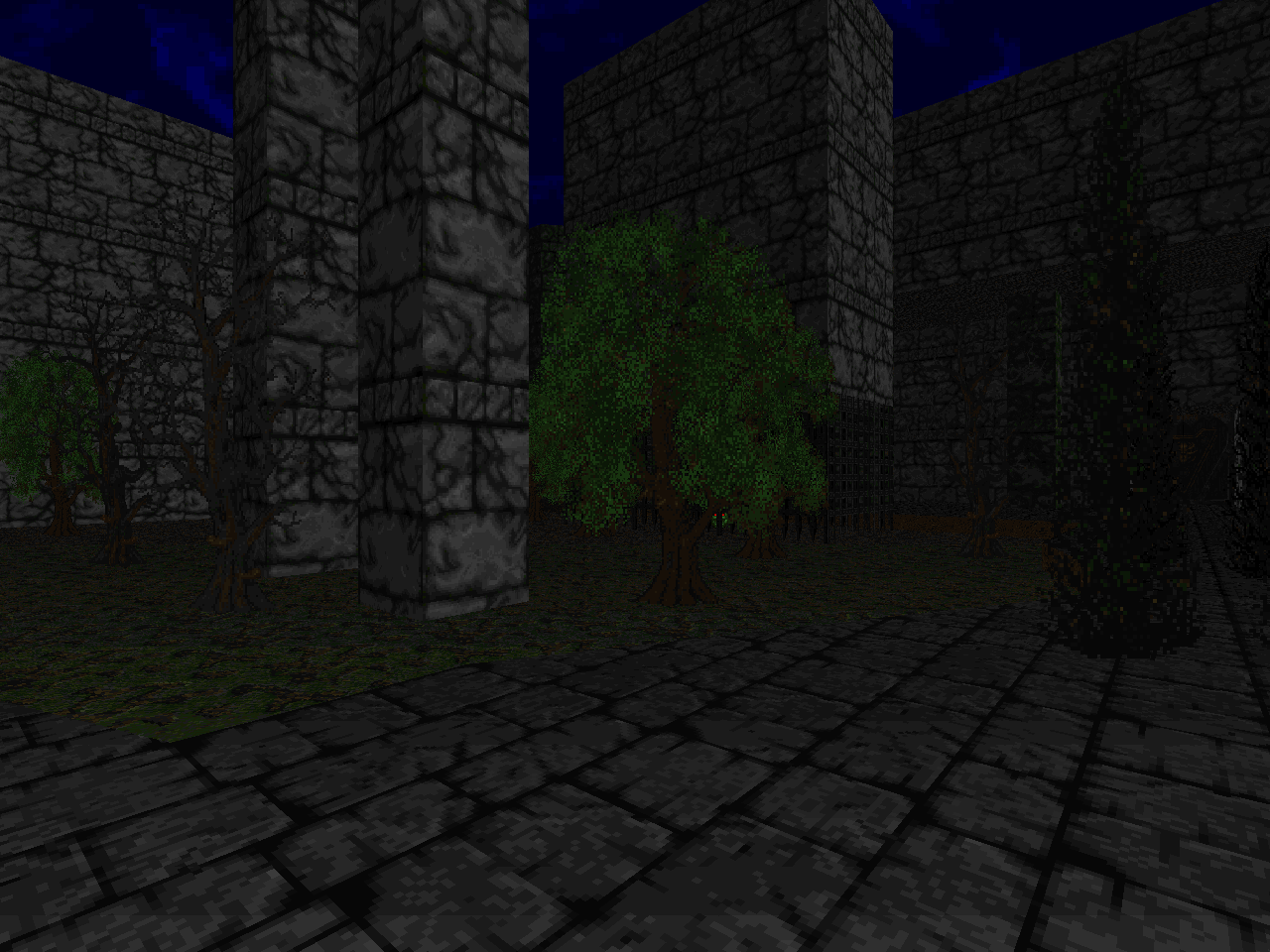

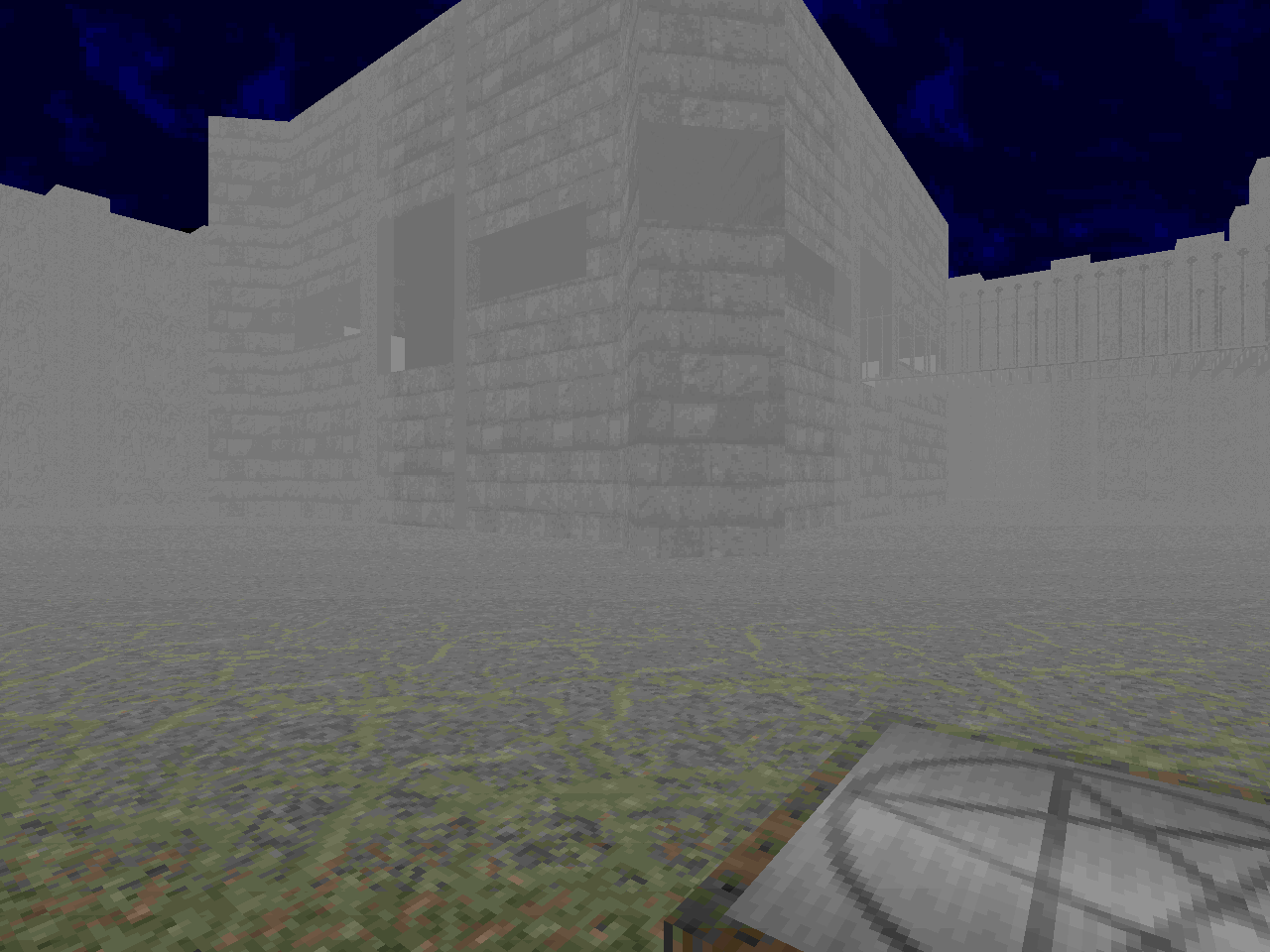
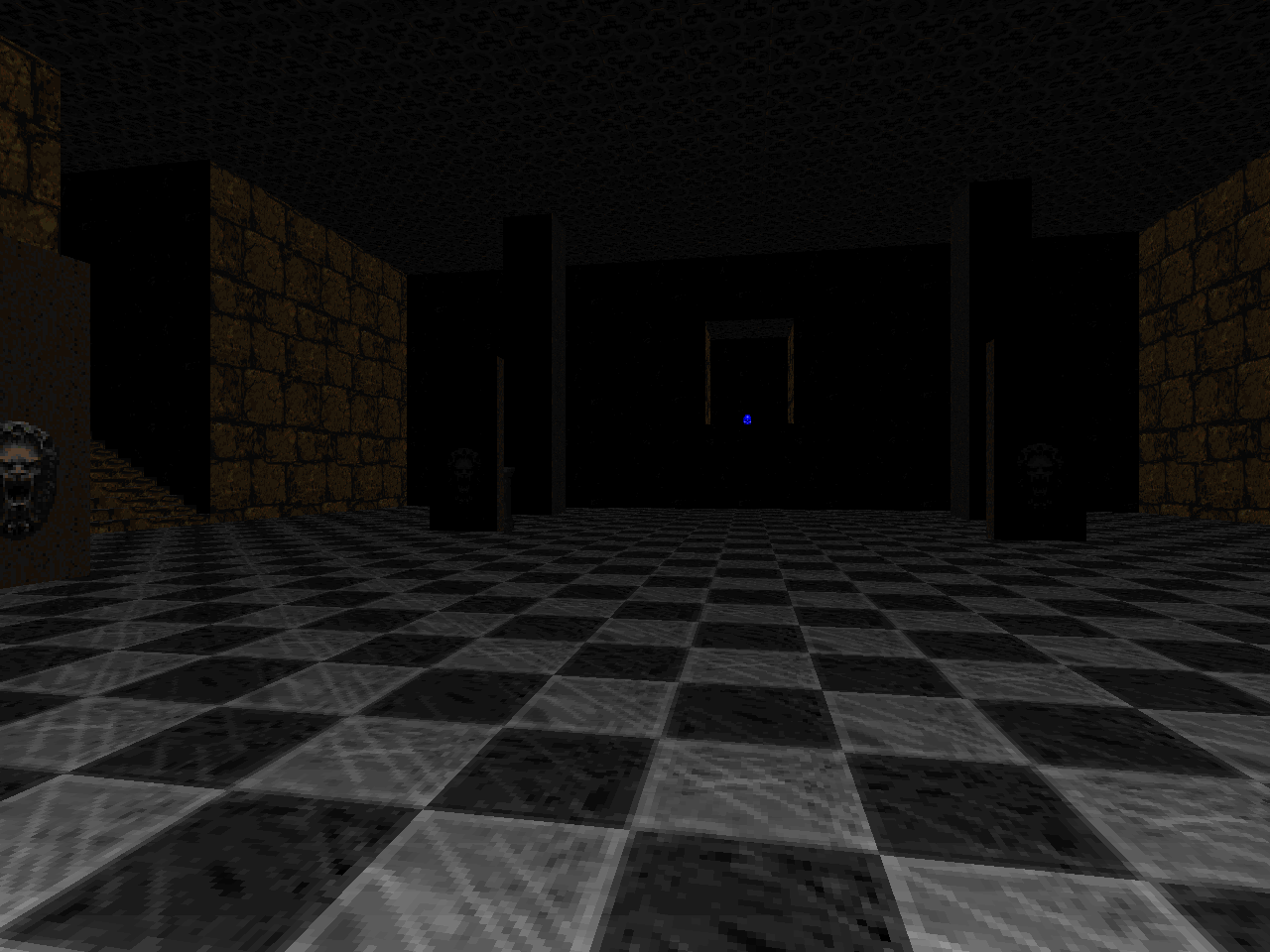
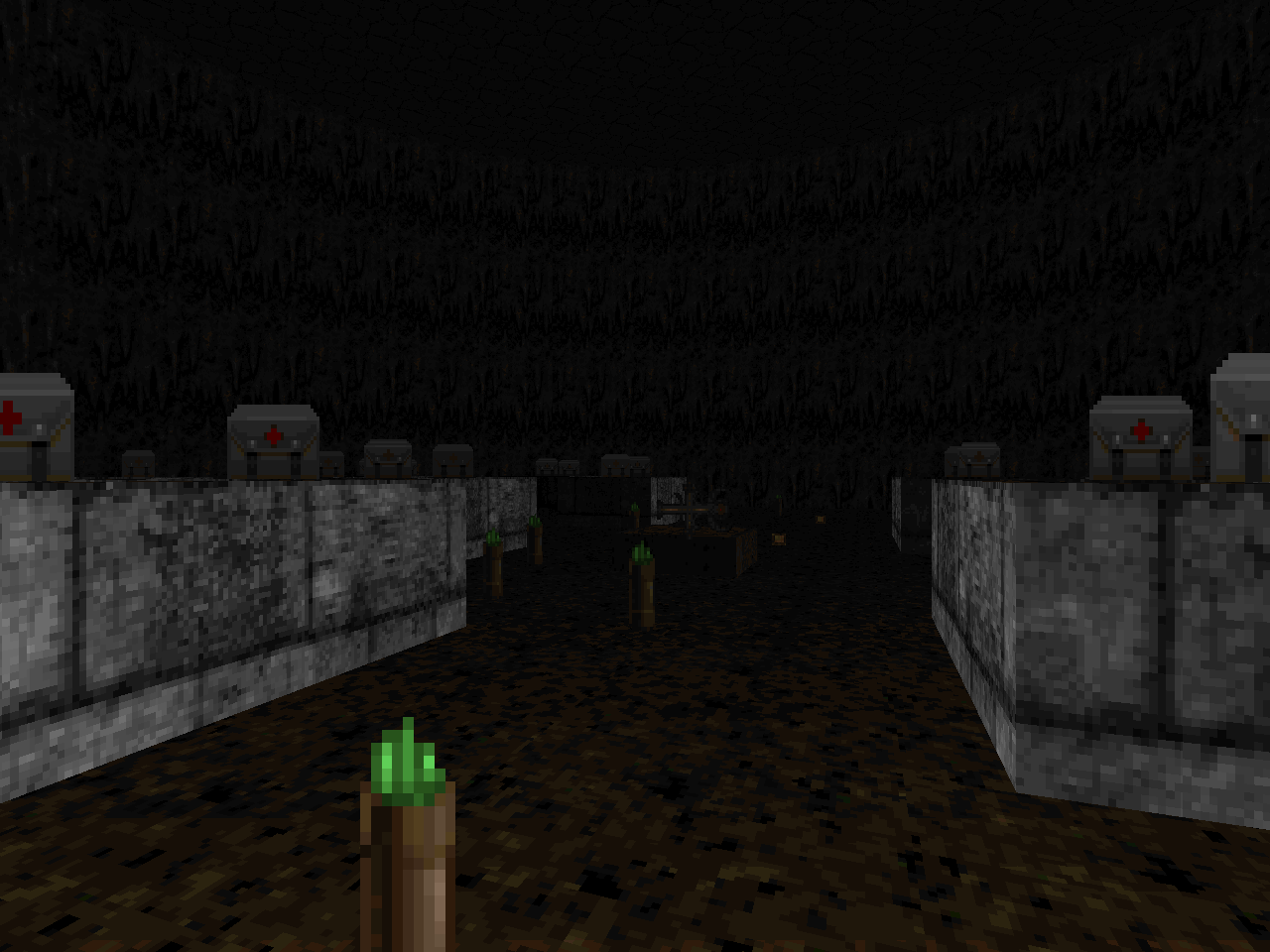
No comments:
Post a Comment